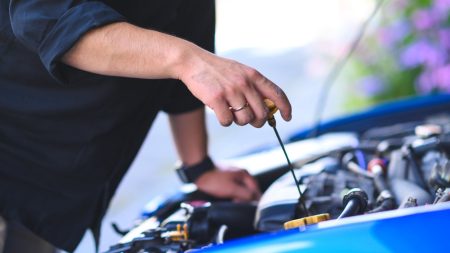Key takeaways
- Dealer financing lets you secure an auto loan in house through a partner lender or a financing company owned by the dealership or vehicle manufacturer.
- It helps make the purchasing process more convenient, but generally isn’t recommended unless you qualify for 0 percent financing or can’t get approved elsewhere.
- If you’re leaning towards dealer financing, getting preapproved by a bank or other lender before heading to the dealership gives you more negotiating power.
- Before signing on the dotted line, be sure to read the fine print to avoid any surprises in the future.
When you opt for dealership financing, you’re using the dealer as an intermediary between you and a lender. Often, this results in higher interest rates — and may afford you less protection as a consumer.
A dealership is a convenient place to get an auto loan. You won’t have to fill out separate applications, and you can take care of it after you have found the perfect ride. But it frequently doesn’t make the most financial sense, especially if you have good credit and an established relationship with a bank or credit union.
How does dealer financing work?
Both independent and franchise dealerships — dealers that work directly with a manufacturer — offer in-house financing. This may be through a finance company owned by the manufacturer, the dealership or a third party.
When you buy a car, you can apply for an auto loan at the dealership. If approved, you can use this loan to finance your car.
Dealer financing is typically considered a last resort by most experts. Dealers make money off in-house financing because they mark up your offered rate. For example, if you could qualify for a loan at 7 percent through a bank, you may receive an offer of 9 percent through dealership financing.
How to get the best deal on dealer financing
Dealer financing is designed to maximize convenience. You will typically be able to find, test drive and buy a car all on the same day. And while experts frequently recommend avoiding certain sales tactics, if you know you’re going to finance through the dealership, the steps are simple.
1. Get preapproved
Although optional, securing preapproval can save you money in the long run. Outside financing options like banks, credit unions and online lenders all offer auto loans at competitive rates.
You can use your preapproved loan to negotiate a good deal with dealer financing if that’s what you want. Otherwise, you’ll be at the mercy of the dealer’s finance company.
2. Find and test drive cars
If time allows, visit multiple dealerships. Your day spent test-driving cars should be separate from your day negotiating a price. You are under no obligation to do everything at once, and in fact, it may get you a better deal if you spread it out.
Salespeople may try to pressure you into a quick sale by citing scarcity. But if you are looking for a common trim on a common make and model, you can find the same car again if the one on the lot gets sold. So, if you are set on financing through a dealer, don’t be swayed by flashy pitches designed to squeeze more money out of you.
3. Meet with the dealer’s finance office
This is the crux of negotiation. Don’t show your hand by revealing your maximum budget, of course, and keep the focus on overall cost rather than monthly payment. And ideally, you want to show up preapproved by another lender.
If you haven’t gotten a loan from an outside source, don’t worry. You’ll just need to reject offers for loan add-ons you don’t want or need. Ideally, your negotiations should center around the amount you’ll pay and the loan terms.
Once you have reached an agreement, you’ll fill out the finance paperwork. The dealer will send it to its lender partner to see if you qualify for the loan.
4. Review the offer and sign the paperwork
Here’s where you need to be careful. Some dealers may sneak in a clause that says your purchase is “pending approval” — and may still be up for change. While this practice is common and not automatically a red flag, it can set you up for yo-yo financing.
Keep an eye on other small-print details as well. But if you like the interest rate and terms you have been given, it’s time to sign the paperwork. Work out how the titling process will go and what you’ll need to send the lender to finalize the purchase. After that, it’s your car to drive and make payments on.
Who dealer financing is best for
If you don’t have great credit and cannot secure a competitive rate elsewhere, dealer financing could be your only option. It is also a good choice for drivers with excellent credit who can qualify for a 0 percent APR car deal.
If you have bad credit, you may end up at a buy here, pay here dealership. You’ll have an easier time buying a car, but it comes at a cost. These dealerships frequently require a large down payment and may quote you a high interest rate. It may still be worth looking at bad credit auto loan rates.
That said, if your credit is excellent, you may be eligible for dealer incentives on loans and leases. These are extremely difficult to qualify for, but if you do, you can drive away with a great deal by using the dealer’s captive finance company that works directly with the manufacturer instead of a bank or credit union.
Alternatives to dealer financing
If dealer financing doesn’t quite work for you, or you would like to explore other auto loan options, consider these alternatives:
- Traditional bank: Banks generally offer competitive terms on auto financing to consumers with excellent credit. A lower credit score doesn’t mean you will automatically be denied a loan, but the borrowing costs will likely be substantially higher.
- Credit union: Auto loans from credit unions generally come with lower interest rates than you’ll find with traditional banks, and the lending criteria are a bit more flexible. However, you will need to be a member of the credit union you are seeking a loan from to apply.
- Online lender: You can shop for the best deal on an auto loan from the comfort of your home. It’s easier to compare your options, and you will likely get a much better deal than you would by financing through a dealership.
Bottom line
At the end of the day, dealership financing isn’t the worst option. However, you should already have financing from a bank or other lender before you fill out a credit application at the dealership. This gives you more room to negotiate your auto loan.
If you don’t qualify for outside financing, dealerships may be able to set you up with a loan. Just understand the costs, pick an affordable car and calculate your monthly payment to ensure you won’t be strapped for cash.
Read the full article here










